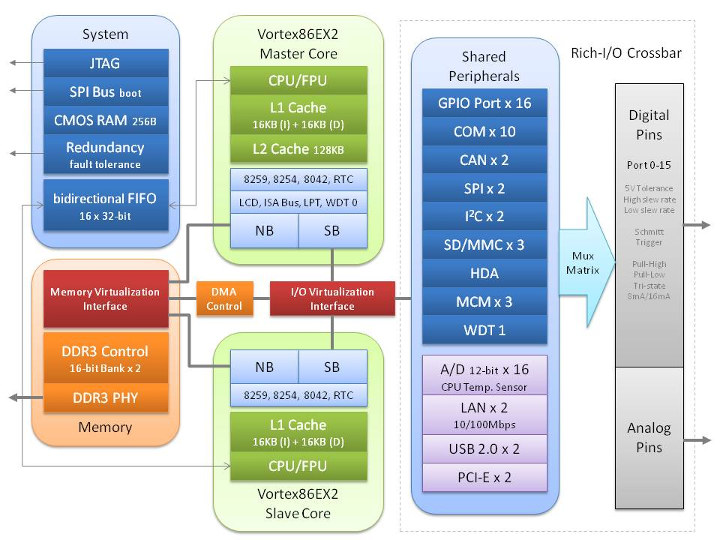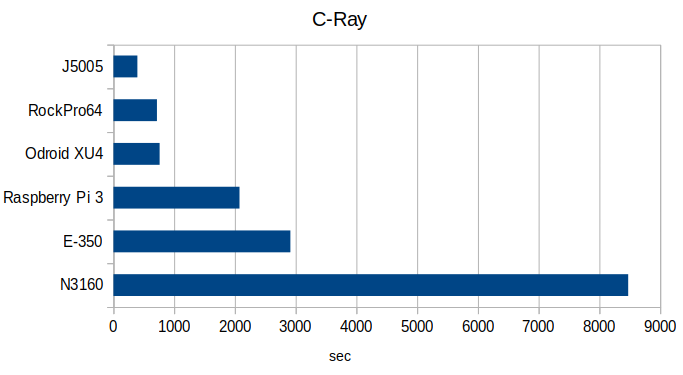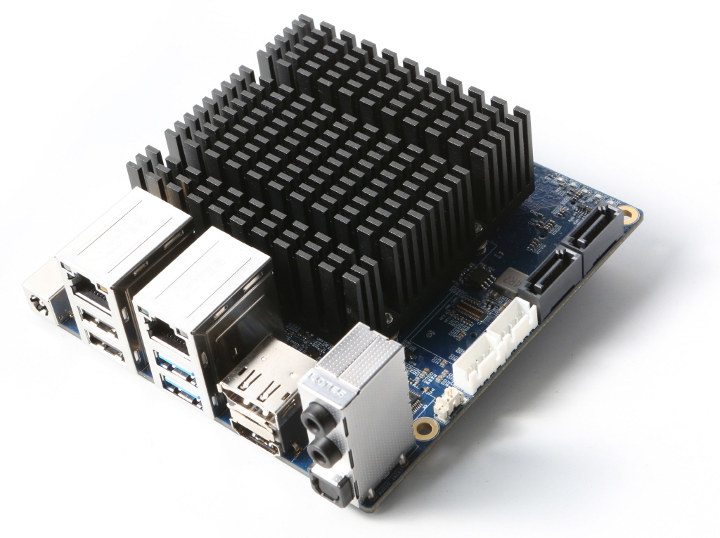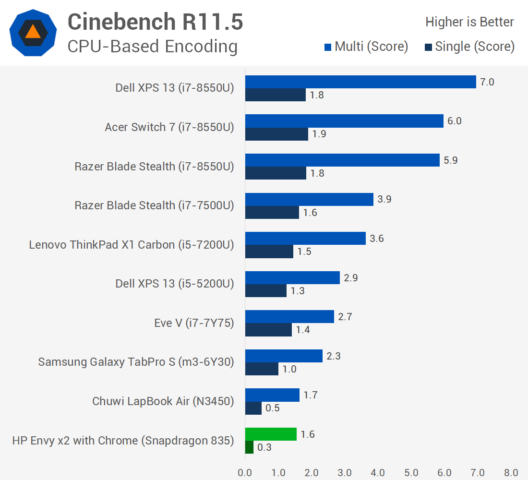If you’re a recent owner of a Raspberry Pi 4 SBC, you should have had an early taste of Debian 10 “Buster”, since the Raspberry Pi Foundation decided to release their Raspbian “Buster” image before the actual release in order to lower software development costs. Debian developers have only just announced the release of Debian 10 “Buster”. The new version of Debian supports various desktop environments including Cinnamon 3.8, GNOME 3.30, KDE Plasma 5.14, LXDE .99.2, LXQt 0.14, MATE 1.20, and Xfce 4.12. Besides the official announcement Debian also posted tidbits on their Twitter feed, where we learn for example that “Debian 10 buster has 28,939 source packages with 11,610,055 source files”. Officially supported architectures for Debian 10 include i386 and amd64 for x86 targets, arm64, armel and armhf Arm architectures, as well as various other architectures including MIPS (mips64el, mipsel…), PowerPC (ppc64el), and IBM System z (s390x). One notable […]
DM&P Vortex86EX2 Dual Core Processor Targets Dual OS Systems, Support ISA & PCI Interfaces
Most people will probably think about Intel and AMD when asked about x86 processors, at least those who understand the question… But there are also other companies such as Zhaoxin (based on VIA Technologies designs) and DM&P. Last time I wrote about the latter was in 2015 with the introduction of DM&P Vortex86DX3 dual-core x86 SoC for embedded systems and the corresponding evaluation board. The company is still making new x86 processors, and I’ve just been information the company unveiled Vortex86EX2 dual-core processor last year with master and slave cores suitable for running two operating systems at the same time without the need for virtualization, nor hypervisor. The new processor still supports ISA & PCI interfaces for legacy expansion cards and targets real-time industrial or automation applications. DM&P Vortex86EX2 specifications: Processor Cores Master @ 600MHz max with Build-in FPU L1/L2 Cache for user interface Slave @ 400MHz max with Build-in […]
Embedded Linux Conference & Open Source Summit 2019 Schedule
In the last few years, I covered the Embedded Linux Conference and IoT Summit schedules since both were happening at the same time and in the same location. But the Linux Foundation have recently announced the Embedded Linux Conference will combine with the Open Source Summit, so the IoT Summit appears to have been phased out. The full schedule for the events taking place on August 21 – 23, 2019 at the Hilton San Diego Bayfront, USA, has also been released, so I’ll create a virtual schedule with some of the sessions most relevant to this blog. Wednesday August 21, 2019 11:30 – 12:05 – What’s New with U-Boot? by Simon Glass, Google LLC U-Boot is a widely used bootloader in embedded systems. Many users are unaware of the wide feature-set of U-Boot, particularly features added in the last few years. This talk aims to bring users (and prospective users) […]
An Attempt to Benchmark Entry-level x86 Boards against RK3399 & Exynos Arm Boards
Some Arm boards have become quite powerful, while hardware based on low power Intel processor has generally become cheaper with both architectures somewhat converging in terms of performance and price. Piotr Maliński got interested and purchased some low cost (<$150) Intel hardware to compare to mid-range Arm boards, throwing a Raspberry Pi 3 B+ into the mix as well for comparison. Those are the Intel test boards / computers: Qotom motherboard with Intel Atom Z3735F Bay Trail processor, 2GB RAM, 32GB flash – $74 + shipping on Aliexpress Piesia nano ITX board with Intel Celeron N2806 Bay Trail processor, DDR3 SO-DIMM socket, SATA / mSATA interfaces – Piotr found it for around $85 on Aliexpress, but the price now jumped to over $150 plus shipping, which does not make it very attractive Generic thin mini ITX motherboard based on Celeron N3160 “Braswell” processor, DDR3 SO-DIMM socket, SATA / mSATA interfaces. $62.68 […]
ODROID-H2 Intel Celeron J4105 Single Board Computer to Launch in November
There were talks about Hardkernel working on an ODROID x86 board since last year, as the CEO expected to launch such board later in 2017 in an interview published in ODROID magazine. Finally, it took them several iterations and processors considerations before being ready for launch, and ODROID-H2 should become available next month as the first ODROID x86 board. ODROID-H2 will feature an Intel Celeron J4105 Gemini Lake processor, two SO-DIMM slots for memory, two SATA ports and M.2 NVMe slot for storage, two Gigabit Ethernet ports, a mix of USB 3.0 and 2.0 ports, and more. ODROID-H2 board specifications: SoC – Intel Celeron J4105 quad core processor @ up to 2.3 GHz (real frequency) with 12EU Intel UHD Graphics 600 System Memory – Dual-channel Memory DDR4-PC19200 (2400MT/s) supporting up to 32GiB RAM in total Storage – M.2 PCIe 2.0 x4 slot for one NVMe storage, 2x SATA 3.0 ports, […]
Snapdragon 835 based Always-Connected PC Benchmarks Show Performance Similar to Intel Apollo Lake Laptop (in Most Cases)
The first Windows 10 Arm Mobile PCs were announced a few months ago, all based on Qualcomm Snapdragon 835 processor, with products such as HP Envy x2 (2017) and ASUS NovaGo TP370. The new products promised LTE connectivity, very long battery price, a user experience similar to the one on Intel/AMD based laptops, and at price points ($600 and up) that should command good performance. But TechSpot ran some benchmarks on HP Envy x2 (a $1,000 device), and in most cases, the new always-connected PCs come with performance similar or even lower than a Chuwi laptop based on an Intel Celeron N3450 Apollo Lake processor that sells for a little over $400. That appears to be valid for both x86 emulation and native apps. In some case, the Snapdragon laptop does pretty well with performance close to Core m3 / Core i5-5200U processors such as in the Microsoft Excel workload […]
Open Source Software Releases – VLC 3.0 and Android-x86 7.1-r1
Two completely unrelated open source projects have released a stable version of their software this week, but instead of writing a post for each I’ll write about them in a single post. VLC 3.0 Vetinari VLC developers have just released version 3.0 – codenamed Vetinari – of the popular media player with new features such as ChromeCast support, and 8K video playback. Other highlights from the release include: Hardware decoding enabled by default to get 4K and 8K playback 10-bit and HDR support (only on Windows 10 Fall Creators Update for now) 360 video and 3D audio, up to Ambisoncics 3rd order Allows audio passthrough for HD audio codecs Can play Blu-Ray Java menus: BD-J Browsing of local network drives and NAS VLC 3.0 is also the first major version to be released for all platforms at the same time, and you can download VLC 3.0 for Windows, Mac OS […]
Year 2017 in Review, Top 10 Posts, and Some Fun Stats
2017 is coming to an end, and as I do every year, I’ll take a look back at the year that was on CNX Software. The pace of development boards launches has not slowed down this year, and we get an even wider range from the low-end with Orange Pi or NanoPi boards, to much more powerful ARM boards, and some new entrants like Libre Computer. The same is true for TV boxes, most of which now support 4K HDR, ranging from ultra cheap models selling for less than $20 to higher end Android TV boxes, while mini PCs were dominated by Intel Apollo Lake models, although some Cherry Trail products were also launched. Processor-wise, Amlogic launched more Amlogic S905X derivatives with S905W/S905D/S905Z, which are popular in the TV box market. Rockchip’s most interesting processor this year was RK3328 quad core Cortex A53 processor designed for 4K HDR Android TV […]









